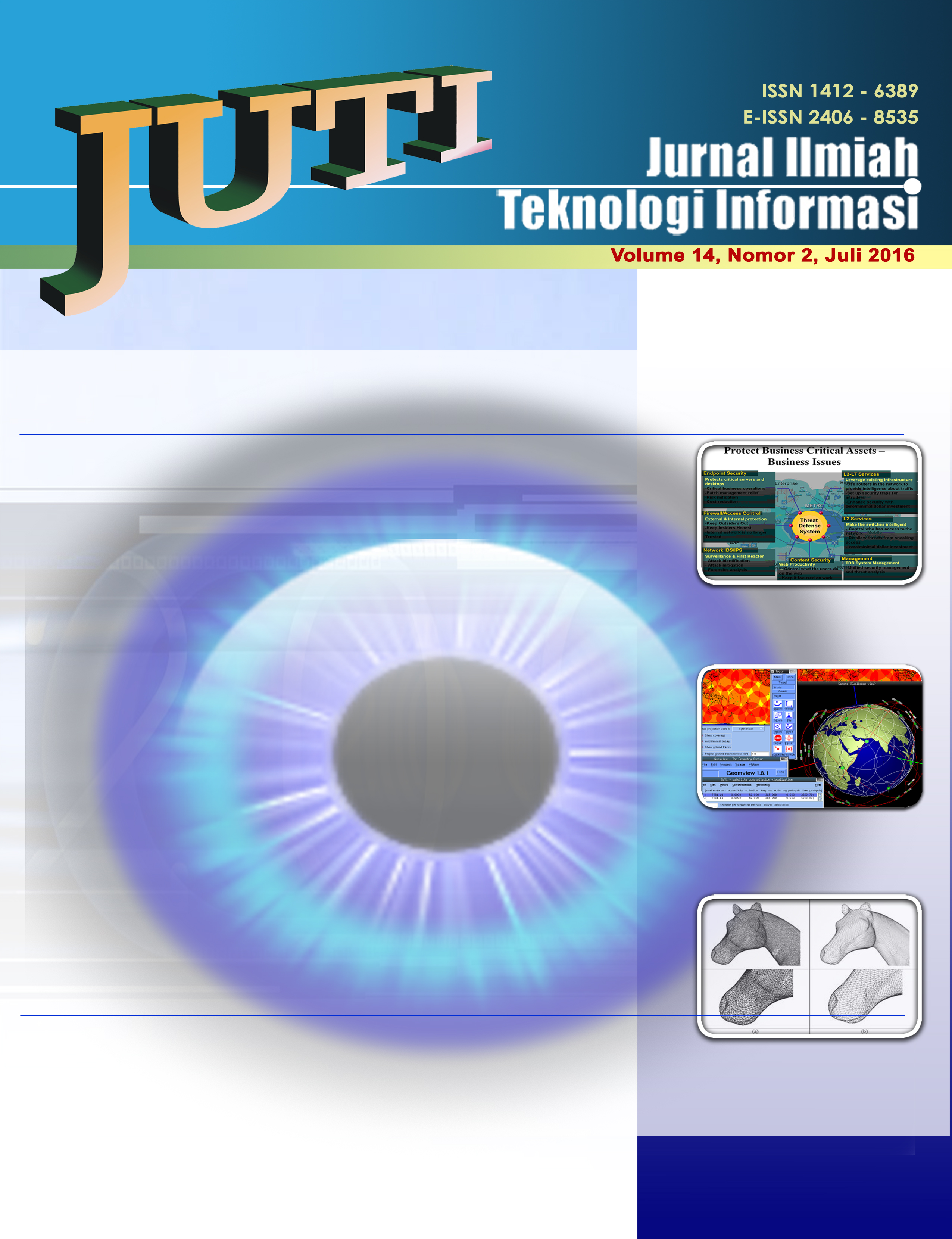IMPLEMENTASI PENGEMBANGAN METODE DIFFERENTIAL EVOLUTIONUNTUK CLUSTERING PIXEL
DOI:
https://doi.org/10.12962/j24068535.v9i2.a32Abstract
Perkembangan metode komputasi telah mengalami percepatan yang luar biasa. Berbagai teknik komputasi untuk mendapatkan solusi dengan kinerja optimal terus berkembang. Sejumlah algoritma termasuk dalam rumpun Evolutionary Computation, diantaranya adalah Differential Evolution (DE) yang berhasil menyelesaikan masalah optimasi dalam berbagai bidang diantaranya masalah clustering. Keunggulan DE adalah karena implementasinya yangmudah dan kecepatan konvergensinya. Dalam clustering, DE menghadapi kendala penentuan jumlah cluster. Pada penelitian ini diimplementasikan sebuah algoritma Evolutionary Clustering (EC) yang merupakan pengembangan dari DE. EC diterapkan untuk melakukan pengelompokan pixel-pixel dari citra gray-scale atas beberapa area homogen yang berbeda satu dengan lainnya. EC tidak membutuhkan informasi awal tentang jumlah cluster yang akan terbentuk. EC menjadi salah satu solusi untuk menentukan jumlah cluster optimal dengan nilai validitas yang lebih baik. Kinerja dari EC akan dibandingkan dengan algoritma Fuzzy C-Means (FCM). Hasil dari EC dibanding FCM relatif sama dari segi nilai cluster validity index namun EC membutuhkan waktu relatif lebih singkat.
Downloads
Downloads
Published
Issue
Section
How to Cite
License
All papers should be submitted electronically. All submitted manuscripts must be original work that is not under submission at another journal or under consideration for publication in another form, such as a monograph or chapter of a book. Authors of submitted papers are obligated not to submit their paper for publication elsewhere until an editorial decision is rendered on their submission. Further, authors of accepted papers are prohibited from publishing the results in other publications that appear before the paper is published in JUTI unless they receive approval for doing so from the Editor-in-Chief.
JUTI open access articles are distributed under a Creative Commons Attribution-ShareAlike 4.0 International License. This license lets the audience to give appropriate credit, provide a link to the license, and indicate if changes were made and if they remix, transform, or build upon the material, they must distribute contributions under the same license as the original.












